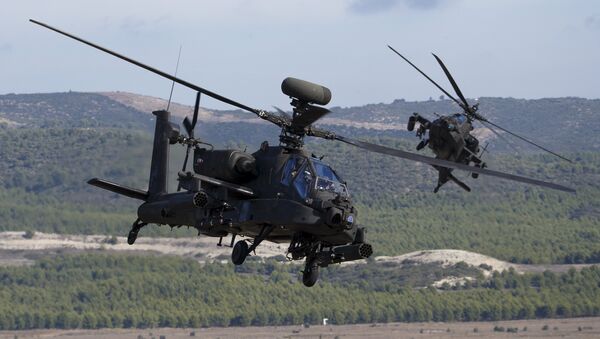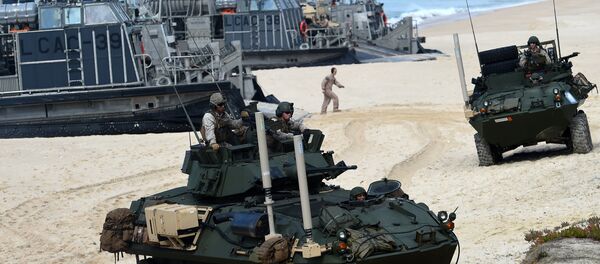"It can be concluded that NATO is showing its muscles. But for whom? Who should be impressed by this gigantic show of force?'" asks author Thorsten Jungholt.
"Hans-Lothar Domrose, German general and commander of the NATO maneuver makes [the aim] no secret. The alliance feels particularly challenged by Russia to the east of Europe, and from the south, Syria and the Mediterranean Sea."
Atlantisches #Welt Geschwätz: Die arme #NATO ist bedroht um umzingelt. Was für #Kriegstreiber! https://t.co/maS2T9hVIb
— Jörg Tauss (@tauss) November 6, 2015
'NATO is arming itself for battle against Putin and ISIL' wrote Die Welt on Wednesday.
"Domrose's message to the Kremlin is clear: the alliance's defense is standing, and NATO is ready at any moment to take action in crisis situations, even outside its territory," Jungholt writes.
"But this message is not only aimed at Moscow," said the newspaper, quoting NATO general Domrose.
"The biggest threat is the simultaneous appearance of challenges in the east, and the insecure situation in the southern crisis regions," said the NATO general, who commanded 3,000 Bundeswehr soldiers in Operation Trident, more than all the German soldiers currently taking part in foreign operations combined.
A total of 36,000 NATO troops participated in the Trident Juncture military exercise, which involved 130 aircraft, 16 helicopters and 60 warships, mainly in Spain, Italy and Portugal.
In the threat scenario envisaged by NATO commanders, the fictional region of 'Cerasia' in Africa is threatened by conflict due to water shortages. One country invades another in order to seize key dams, against a background of desertification, drying aquifers, disputes over land close to rivers, and an ever-diminishing resource.




